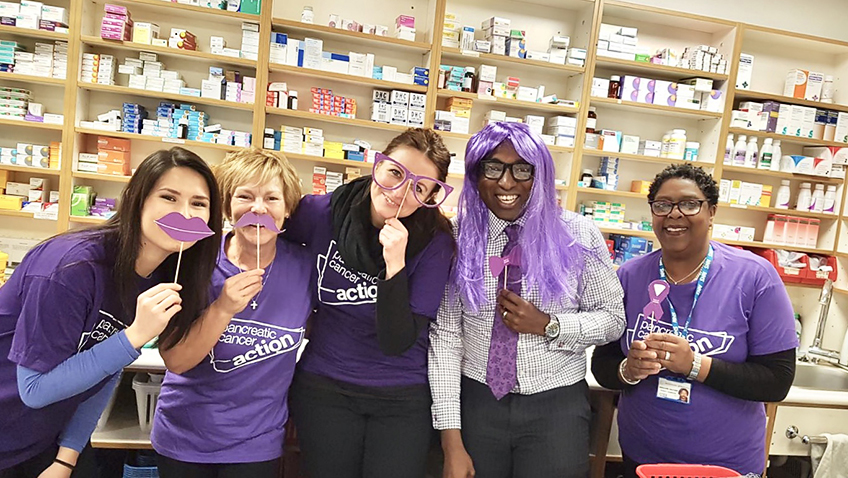Every November, pharmacies across the UK take part in the Pancreatic Cancer Awareness campaign, holding a Turn it Purple event to help raise awareness of the disease amongst their local communities.
Last year Ade Williams, pharmacist at Bedminster Pharmacy, was asked to join Hugh Grant and Dr Hilary Jones as a National Ambassador for the Pancreatic Cancer Action Charity. Here, Ade gives MT an overview of the disease, its signs and symptoms:
What is the pancreas?
The pancreas is a vital part of our digestive system and is a critical controller of blood sugar levels, but because the pancreas isn’t seen or felt in our day-to-day lives, most of us don’t know much about it. It has two main jobs in the body: it makes enzymes to help us digest our food and it produces the hormone insulin that controls blood sugar levels.
Found deep inside our body, the pancreas sits behind the stomach and in front of the spine and so tumours are rarely felt.
What is pancreatic cancer?
Pancreatic cancer occurs when a malignant tumour forms in the pancreas. It affects men and women equally with greater risk from the age of 45, with the average age at diagnosis being 72. In the UK, approximately 10,000 people are newly diagnosed each year and it is the fifth biggest cancer killer in the UK, but only receives 3% of cancer research funding.
Every day 27 people will be diagnosed with pancreatic cancer in the UK, and half of those will find out their diagnosis following an admission to A&E. Sadly, due to the extremely low survival rate of the disease, 24 of those diagnosed today will die within five years.
What causes it?
It’s not fully understood what exactly causes pancreatic cancer, but the known risk factors are smoking, diabetes, obesity and long-term pancreatitis. The risk of developing pancreatic cancer also increases with age. The signs and symptoms of pancreatic cancer include:
- Unexplained weight loss – losing weight without trying.
- Jaundice – yellowing of the skin and whites of the eyes, and/or very itchy skin.
- Mid-back pain – where a bra strap would sit – that may be eased by leaning forward.
- Upper abdominal pain that may radiate to the back.
- New-onset diabetes (not associated with weight gain).
- Indigestion that does not respond to medication.
- Pale and smelly stools that don’t flush easily.
Older patients are often less likely to want to trouble anyone with some of these symptoms and so as the health professionals with the most contact with them, the pharmacy must make sure that every contact counts.
In most cases, the disease develops unexpectedly with no family connections, but if you do have a close relative diagnosed with pancreatic cancer you should talk to your doctor, especially if you have any worrying symptoms.
Pancreatic Cancer Action has stated that: ‘the community pharmacy is well placed to spot potential signs and symptoms of pancreatic cancer. They play a crucial role in aiding early diagnosis, which can significantly improve a patient’s chance of survival.’
Pharmacies offer their private consultation room to chat with you and as an early referral is a critical measure of survival; don’t be surprised if they offer to follow up on your symptoms. By helping to improve early diagnosis, your pharmacy can help to improve the survival rate from 7% to 30%. Our communities need us to lead this fight and stop pancreatic cancer blighting more families. This, we know, is no purple prose.
So, if you come across any purple wig-wearing pharmacists this month, you now know what it’s all about.
To find out more about Pancreatic Cancer Action and their work supporting patients and their families, please contact PCA on: 03030401770 or visit: www.pancreaticcanceraction.org. Your support will be greatly appreciated.





